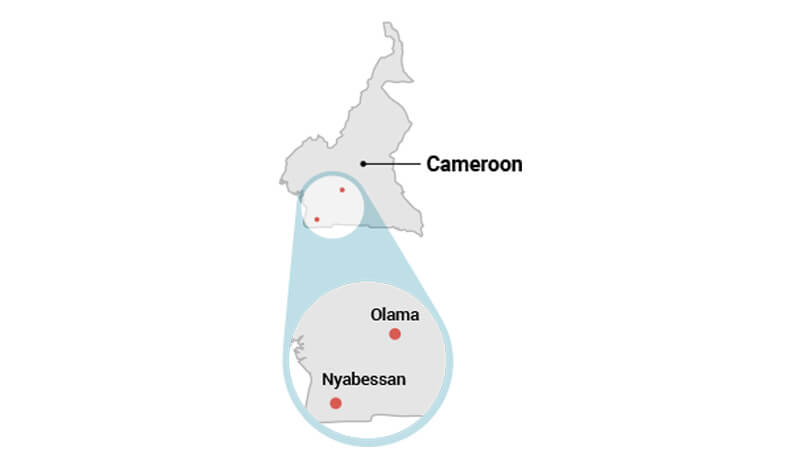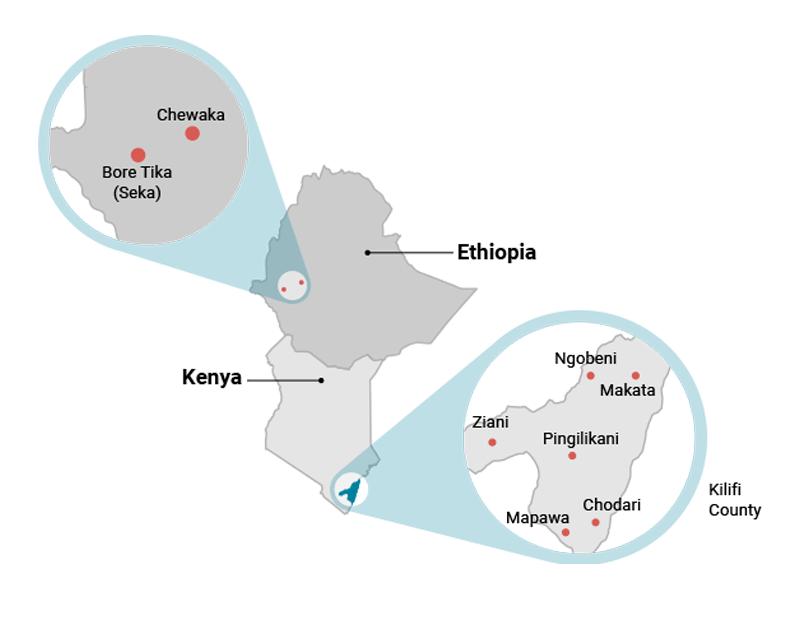Research Sites
The research sites
The study was conducted across six sites in three ecological zones: Forested Cameroon, Coastal Kenya and Highland Ethiopia.
Cameroon study sites
The study took place in the Olama and Nyabessan villages, south of Yaoundé along the Nyong and Ntem Rivers, respectively. Both villages occur in equatorial forests with two rainy seasons between March-June and September-November, and mean annual rainfall between 1600-1800 mm. Malaria transmission patterns in the villages are perennial, with Anopheles gambiae, An. nili and An. moucheti as dominant vectors in Nyabessan and An. moucheti in Olama.

Kenya study sites
The six study villages along the Kenyan coast are tropical, with mean annual rainfall between 750-1200 mm occurring in April-June and October-December. Primary vectors in the area are Anopheles gambiae s.s, An. arabiensis, An. merus and An. funestus. The distribution of these species is closely linked to that of humans. Based on malaria prevalence, villages were divided according to effectiveness of long-lasting insecticidal nets (LLINs) in preventing mosquito bites: high effectiveness (Makata, Ziani and Pingilikani) and low effectiveness (Chodari, Ng'ombeni and Mapawa).
Ethiopia study sites
Seka/Bore Tika village has high levels of malaria infection due to its proximity to the Gilgel-Gibe River. It has a mean annual rainfall of 1489 mm and mean temperatures between 11–27 ºC. The main socio-economic activity in the area is mixed farming.
In Chewaka village, inhabitants are resettled communities from eastern Ethiopia due to recurrent drought. The population frequently spends the early part of the night chewing Khat (Catha edulis), an indigenous plant used as a stimulant drug. Widely cultivated crops in the villages include maize, sorghum, khat, pepper and coffee.


